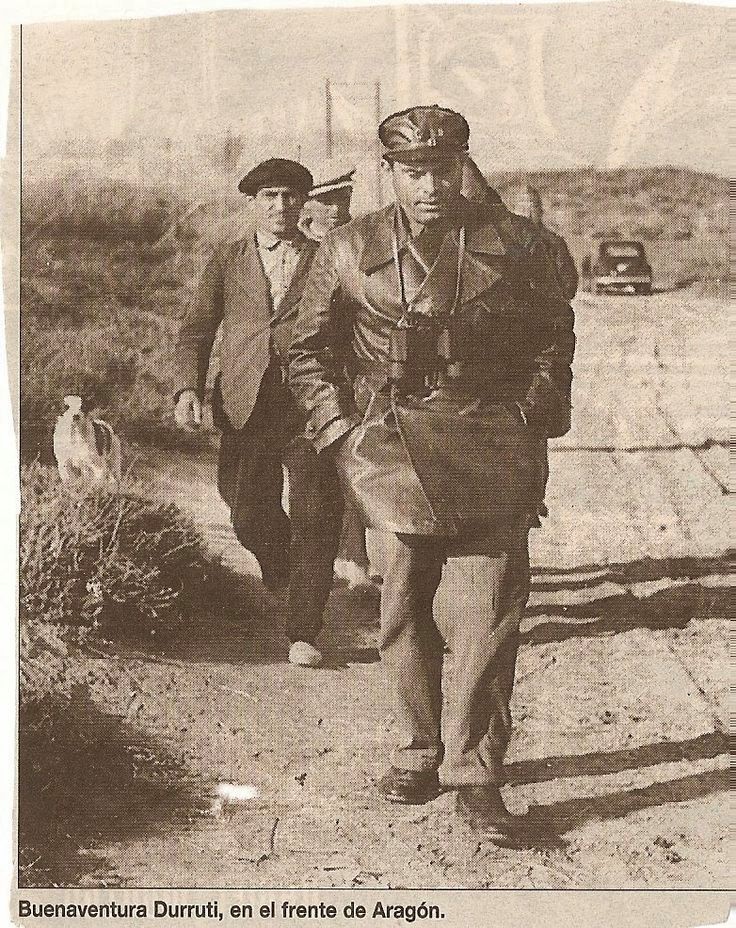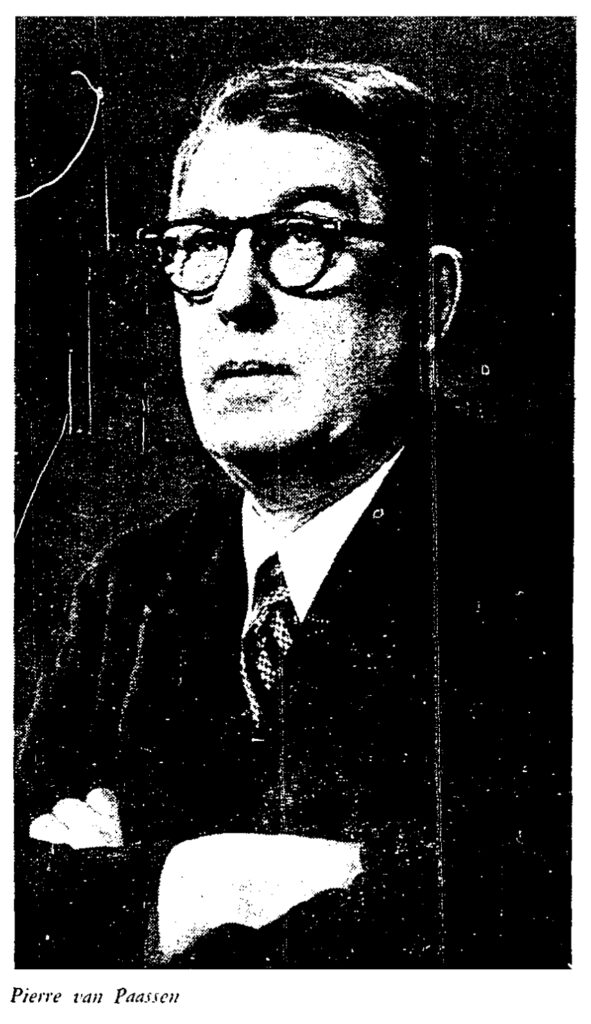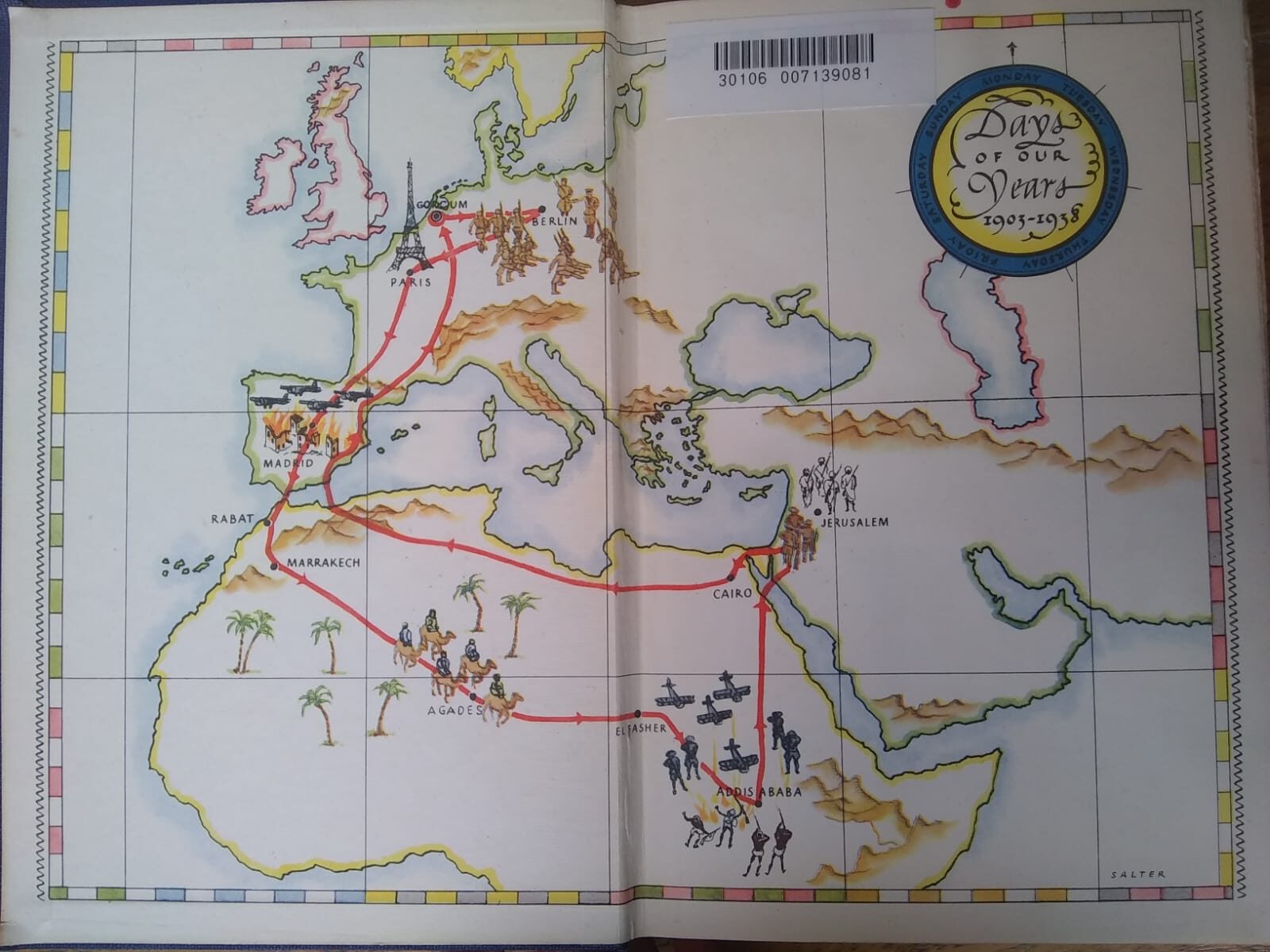Article by Danny Evans demonstrating that the most famous quotation supposedly by Spanish anarchist Buenaventura Durruti was in fact a fabrication by a journalist.

‘Can you win alone?’ I asked the burning question point-blank.
Durruti did not answer. He stroked his chin. His eyes glowed.
‘You will be sitting on top of a pile of ruins even if you are victorious,’ I ventured to break his reverie.
‘We have always lived in slums and holes in the wall,’ he said quietly.
‘We will have to accommodate ourselves for a time. For, you must not forget, that we can also build. It is we who built these palaces and cities, here in Spain and in America and everywhere. We, the workers. We can build others to take their place. And better ones. We are not in the least afraid of ruins. We are going to inherit the earth. There is not the slightest doubt about that. The bourgeoisie might blast and ruin its own world before it leaves the stage of history. We carry a new world here, in our hearts,’ he said in a hoarse whisper. And he added: ‘That world is growing in this minute.’[i]

Buenaventura Durruti’s response to the Dutch journalist Pierre van Paassen, published on 18 August 1936 in the Toronto Star, is the most famous statement associated with Spanish anarchism. However, a recent article by Manel Aisa in the Spanish anarchist magazine Orto convincingly asserts that this interview never took place.[ii]
Aisa’s argument is based on a 1963 biography of Toronto Star editor, J.E. Atkinson, written by Ross Harkness who was himself a former reporter for the paper. Harkness relates how van Paassen was hired at the beginning of the 1930s as a ‘roving correspondent in Europe’ by the Star’s managing editor H.C. Hindmarsh.[iii] The Star subsequently had the distinction of being one of the first newspapers to be banned from Hitler’s Germany, with the articles by van Paassen cited in the Nazis’ official statement, which erroneously described him as a ‘Dutch Jew.’[iv]
When Civil War broke out in Spain, van Paassen was assigned to cover the conflict. His reports quickly raised the ire of the right-wing press in Canada. According to Harkness, by September 1936, ‘the Catholic Register was declaring van Paassen was not in Spain at all, but was living in Paris and either drawing upon his imagination or rewriting the dispatches of other reporters.’[v] Given that van Paassen’s reports from Germany had raised a similar outcry, the editors of the Star were disinclined to believe the accusations. Nevertheless, Atkinson sent Hindmarsh on a fact-finding mission to Paris. After calling at van Paassen’s address he found the writer absent – a conversation with his servants, neighbours, and the milkman were sufficient for a damning report to be conveyed to Atkinson. Van Paassen was sent a cheque for $1000 and a letter of dismissal.[vi]
Although Harkness claims that van Paassen’s dispatches on the Civil War were ‘to cause it more embarrassment than anything it has ever published’, the reasons for his dismissal do not appear to have been made widely known.[vii] They did not prevent, for example, the School of Journalism of the University of Missouri awarding the paper a gold medal for distinguished service in journalism in 1938, citing staff correspondence from Spain in its commendation.[viii] The following year, van Paassen published a best-selling memoir, Days of Our Years, that does not mention his dismissal. In fact, both Harkness’s account and that provided in ‘Hindmarsh of the Star,’ a 1952 essay by Pierre Berton published in the Canadian magazine Maclean’s, leave some room for doubt as to whether the accusations against van Paassen were justified.[ix] Whatever embarrassment the Toronto Star might have suffered, it did not prevent it from reprinting an early van Paassen dispatch in 1992 with the introductory gloss: ‘The Spanish Civil War erupted in July, 1936, and Pierre van Paassen, the Star‘s European correspondent, flew there immediately.’[x]
So, could it be that van Paassen was unfairly dismissed? Might the Durruti interview have taken place?
Unfortunately, a survey of van Paassen’s writing suggests not.
The second report van Paassen filed on the Civil War, dateline Madrid, was, according to the Star, written on 24 July. It provides a first-hand account of the siege of the Montaña barracks in the Spanish capital, where rebel military were holed up at the outset of the conflict. This episode, which van Paassen describes in lurid and grisly detail, took place on 20 July, the same day that newspapers outside of Spain began to report on what had initially appeared to be a localised disturbance in Spanish North Africa. In his report, van Paassen claims to have ridden ‘into Madrid on a truck marked FAI (which letters stand for Iberian Anarchist Federation).’[xi] But he does not say how he got into Spain or where he arrived initially, nor why he had travelled to the country before news of the military rising had been confirmed, nor why he was allowed to ride in a requisitioned truck into the city despite being a non-combatant. In any case, if van Paassen was in Madrid from 20-24 July, then he could not have been in Barcelona, interviewing Durruti, prior to the latter’s departure for the front on 24 July.
The interview with Durruti, famously transcribed in Abel Paz’s biography, was published, according to Paz’s footnote, on 18 August. This footnote provides further grounds for scepticism:
‘This article was published many weeks after the interview took place: our investigations lead us to conclude that it occurred in Barcelona on the morning of July 24 in the CNT’s Metalworkers’ Union. In the piece, Van Paassen says that “from the distance came the roll of the cannonade,” although we must regard that statement as a literary device. It is important to identify the exact or approximate date of the interview because otherwise some of Durruti’s comments are incomprehensible, particularly those about the war and operations against the rebel forces.’[xii]
It seems probable that van Paassen was unaware of how far Barcelona was from the front-line when inventing his tale, hence a ‘literary device’ that betrays his ignorance, and comments regarding the war that don’t fit the dates. The date of publication is also significant in that it almost certainly followed the publication in Pravda of Mihail Koltsov’s interview with Durruti, from which certain details and ideas were likely cribbed for van Paassen’s piece.[xiii]
Van Paassen does not mention the interview with Durruti in Days of Our Years, but he does claim to have been in Barcelona rather than Madrid at the start of the conflict. He describes an episode of fascist snipers firing on a city street with typically gory and precise detail, which he says took place on 23 July. There follows an account of a ‘revolutionary tribunal,’ which supposedly took place in October. Van Paassen claims to have heroically intervened in this trial, saving the life of a highly cultured Catalan friar. He then describes time spent with Durruti during the battle for Siétamo. According to Paz, the Durruti Column was involved in this arena of the war, with several centuries sent as reinforcements under the command of José Mira.[xiv] In other words, not under the command of Durruti, who remained at the Column’s base at Bujaraloz. Nor does Paz mention the components of the ‘general staff’ that van Paassen invented for the Column, supposedly consisting of ‘an English boatswain, named Middleton, who had deserted ship at Barcelona, a French journalist of the newspaper Barrage, and a Señor Panjanú.’[xv]

In the second volume of memoirs published by van Paassen, To Number Our Days, he gives the following account of his arrival in Spain:
‘I happened to be touring Palestine, Transjordania, Syria and Egypt following my long visit to Ethiopia when word came of the Spanish insurrection [in the first volume of his memoirs he claimed to have just returned to France from a tour of Spain when the war broke out, causing him to rush back to the country]. I flew on July 25th from Alexandria to Barcelona in a machine piloted by a Belgian who carried a load of what I suspect to have been narcotics from Smyrna. I was in agony from the moment I climbed aboard this old crate till I set foot in Catalonia. Three times we almost touched the water as the one engine conked out and three times as by some miracle started up again.’[xvi]
This time around, the Catalan monk previously depicted as a near-victim of revolutionary justice is reimagined as being embedded in the Durruti Column, having ‘taken upon himself the role of father confessor to the badly wounded and dying.’[xvii] Dispensing with the heroic tale in which he imagined himself saving this monk’s life, van Paassen now instead relates how it was he who informed Durruti of the death of General Sanjurjo, the initial figurehead for the military coup d’état that began the Civil War.[xviii]
Van Paassen’s insistence on an implausible central role for himself and the array of unlikely but colourful detail with which he furnishes his anecdotes would be sufficient reason to doubt the veracity of his Civil War reports and, it must be said, much of his other writing. But what removes any doubt in this case is that, between the published articles and the two volumes of autobiography, there is barely a sliver of consistency in van Paassen’s writings on the Spanish Civil War.
So, the most famous utterance of Spain’s most famous anarchist is a fabrication! Despite this, it has resonated across the decades as a summation of revolutionary anarchist politics, a poetic and highly quotable paraphrasing of Bakunin, which was presumably van Paassen’s source material when formulating his most celebrated passage. More to the point, it has resonated because, as Aisa points out, the invented phrases succeeded in encapsulating Durruti’s real practice. Van Paassen was contributing to the creation of a romantic figure, which after Durruti’s death a few months later, took on mythical proportions. Behind the myth, however, was a life dedicated to revolution, and a truth more extraordinary than fiction.

References
[i] Abel Paz, Durruti in the Spanish Revolution, trans. Chuck Morse (Chico: AK Press, 2006), p. 478.
[ii] Manel Aisa, ‘Pierre Van Paassen, París, Toronto Star, una fecha, 18 de Agosto de 1936, en Canadá y Durruti en el Frente de Aragón’, Orto. Revista cultural de ídeas ácratas, 41:202 (July-Sept 2021), pp. 35-36.
[iii] Ross Harkness, J.E. Atkinson of the Star (Toronto: University of Toronto Press, 1963), p. 185.
[iv] Ibid., p. 300.
[v] Ibid., p. 303.
[vi] Ibid.
[vii] Ibid., p. 301.
[viii] Ibid., p. 289.
[ix] Pierre Berton, ‘Hindmarsh of the Star’, Maclean’s, 1 April 1952, available at: https://archive.macleans.ca/article/1952/4/1/hindmarsh-of-the-star, last accessed 3 October 2022.
[x] Pierre van Paassen, ‘Sternest Blood Bath in History Foreseen if Spain’s Rebels Win’, Toronto Star, 7 September 1992, p. A2.
[xi] Ibid.
[xii] Paz, Durruti, p. 757.
[xiii] Koltsov met Durruti at the front on 14 August 1936. See Mijaíl Koltsov, Diario de la Guerra de España (Barcelona: Editorial Planeta, 2009 [e-book edition]), pp. 88-95. Paz reconstructs Koltsov’s visit in Paz, Durruti, pp. 503-507.
[xiv] Paz, Durruti, p. 513.
[xv] Pierre van Paassen, Days of Our Years. 1903-1938 (New York: Hillman-Curl, Inc., 1939), p. 441.
[xvi] Pierre van Paassen, To Number Our Days (New York: Charles Scribner’s Sons, 1964), p. 346.
[xvii] Ibid., p. 347.
[xviii] Ibid., p. 348.
Taken from https://anarchiststudies.noblogs.org/article-a-pile-of-ruins-pierre-van-paassen-and-the-mythical-durruti/






Comments